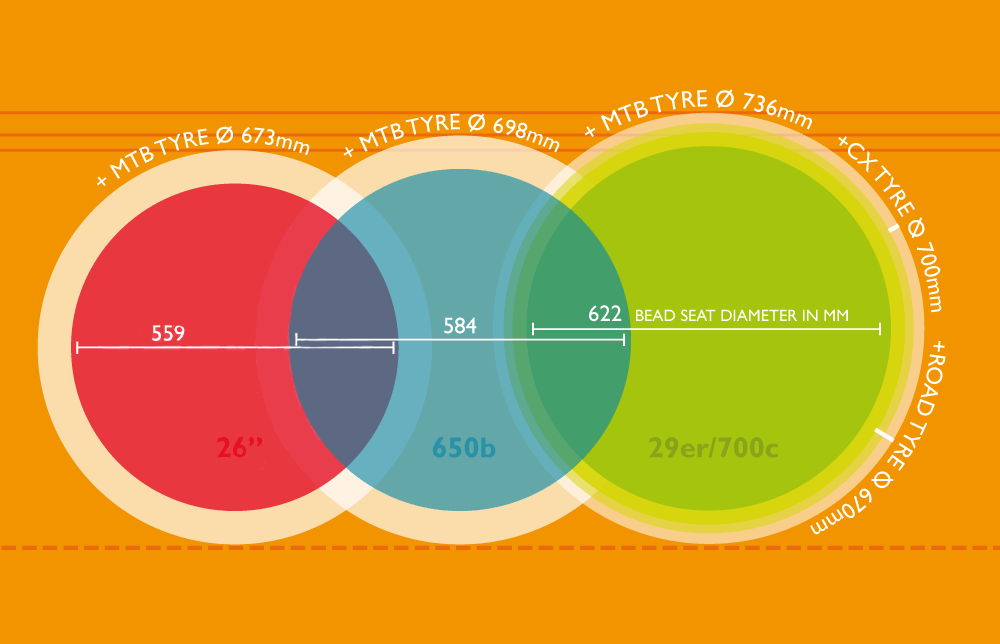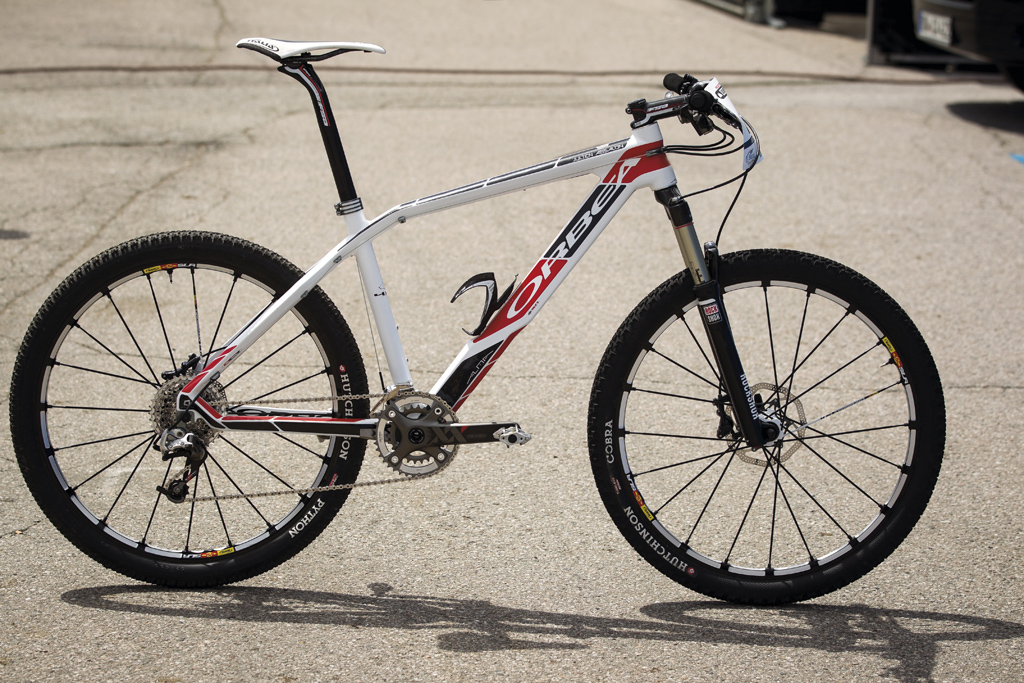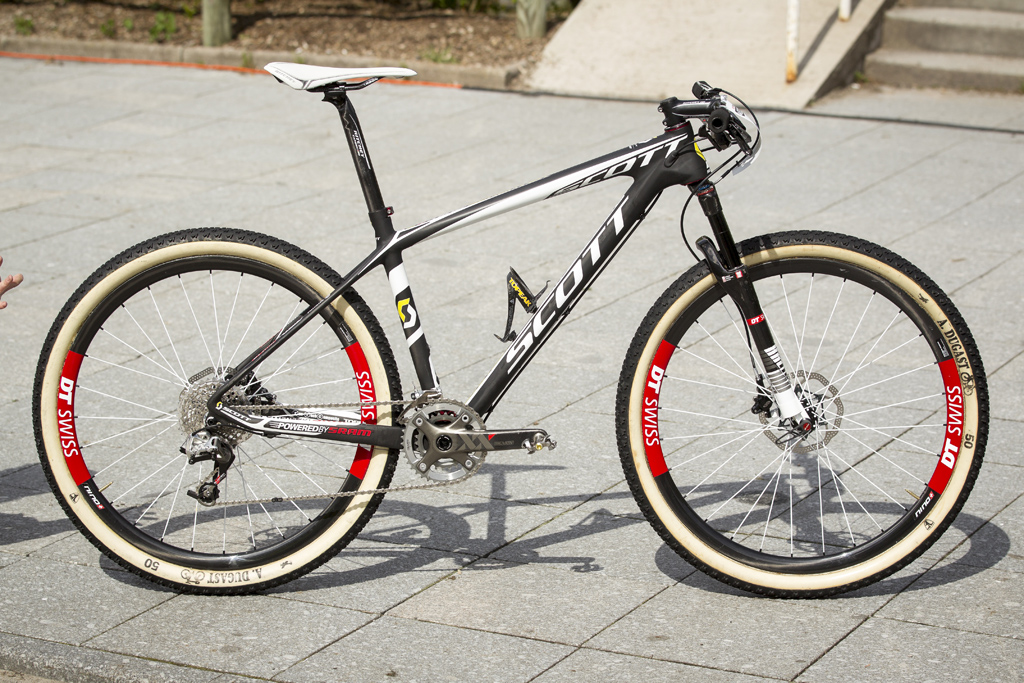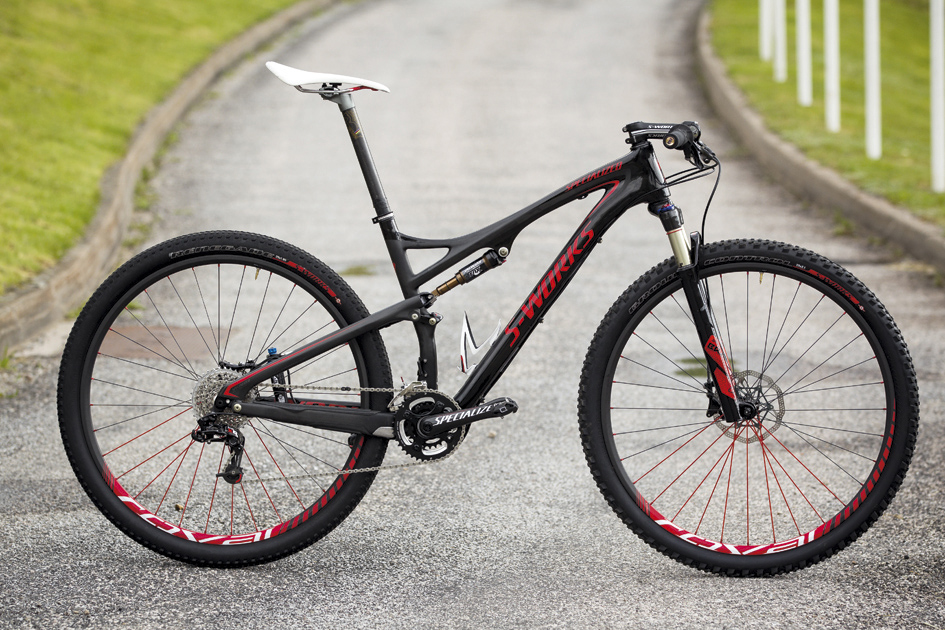
BRAIN (the online & print media otherwise known as Bicycle Retailer And Industry News) has reported from the bicycle heartland (in case you didn’t know, that’s Taichung, Taiwan) that the ubiquitous 26” wheel standard will draw its last breath in the next product year, as the 650B wheel size aka 27.5” will devour the market. Well, to be exact, BRAIN predicts that 26” will survive in entry-level bikes and full-on downhill bikes, 29er will be about XC hardtail and short-travel FS, and 650B will dominate market share of the rest.
Byron went ape-s**t over the fickle “standards” that industry bandies about and discussed it with his huge fan base on Facebook and G+, the Twitter too. Others complain about how 650B is the latest gimmick to sell bikes to a gullible consumer market. Let me give you my take on this:
First off, I don’t currently own a mountainbike, but I sense that I will soon be in the market for a new mtb, and it’s because I want to race offroad again. I blame cyclocross racing; it’s renewed my taste for the dirty. That aside, the important thing to consider is that I no longer own mtb stuff except shoes and pedals; I sold my 1999 26” XC bike years ago. If I’m gonna buy a new bike anyways, what do I care if it’s a “new standard”? As a born-again mtb’er, all the wheel sizes are equally new to my stable. Frankly, the most troublesome part of a new mtb is gonna be a thru-bolt fork, because all the car top racks are 9mm fork clamps.
All right, you say that you’re a competitive xc racer who doesn’t want to have to change equipment to be competitive. Riiiiiiiiight, because XC racing has always been about riding traditional looking bikes with a level-playing field of technology? Hardly. Since day one the sport has been pursuing better performance through component development. They took whatever was available to make the bikes better, rode it till it broke, and then created stuff that would work even better. This isn’t road bike racing; I don’t hear people arguing smugly that a 1986-era Ned Overend on a rigid, original Stumpjumper could beat today’s Nino Shurter on his sub-20-pound 650B race rig. Upgrading to stay current has always been a part of the XC scene. I’m sorry I had to be the one to tell you.
All right, you say that you’re a competitive xc racer who believes that the larger wheel standards are just marketing hype. In fact, you’re the 26” wheel champion. Who are you….Julian Absalon? Well, then you should’ve won a 3rd gold medal at the London Olympics to deliver some righteous counter-hype…..but no, you went and flatted. Everyone knows that XC bike manufacturers have forced all the other top pro riders at gun-point to choose 29er as part of the masterplan. You alone could set your 2% body fat brethren free from the insidious Big Wheel Brother. Now the truth will never get out.
Oh wait, you’re actually not a competitive rider, you just like riding your 26” FS on trails? Relax, buddy! The industry isn’t gonna sneak into your home and steal your 26” bike in the middle of the night. Keep riding it, but when you wanna upgrade the worn out parts none of the coolest new stuff (designed for 650B and 29er) will fit your old frame. Not like last year when you upgraded your 1990s Klein Attitude to 120mm travel fork and disc brakes, right? Look, Sony Walkman was a good product in its heyday, but I can’t really shed a tear in its memory due to the volume of AWESOME coming from my iPod Shuffle.
Oh, sorry, what you actually meant to say is that you’re philosophically against the bike industry’s planned obsolescence? Hey, even a guy who wears anti-consumerism like a beewaxed flannel shirt such as Grant Petersen has argued for alternate wheel sizes. You want to tune in, turn on, and drop out of the never ending gluttony of consumerism? Be my guest: there are literally millions of used 26” mtb out there for you to recycle at your local bicycle pull-apart. Actually, I’m not quite sure what you’re bitching about, you weren’t gonna buy a new bike anyways, 26” or whatever.
Yes, I’m listening to you, sir, Mr Small Bike Manufacturer. Yes, yes, 650B does have some attractive advantages over both 26” and 29er. No, of course I won’t tell consumers that the advantages are 1) easier design issues than 29er and 2) being more novel than 26”. Seriously, though, I’m worried that you haven’t realized that the number of framebuilding school graduates is a lot higher than the demand can support. It’s a harsh world out there; good luck.
I would never ignore you, Big Name Brand. I know you finally got your eggs in a basket for 29er and now you don’t know what do with 650B. Should you make 650B too? I dunno, it’s your job to suck money out the consumer’s pants, not mine. Maybe make some ultra-tech, long-travel 650B rear suspension system that garage-studio start-up builders haven’t a chance to better. But I wouldn’t drop that 29er if you’re serious about high-end XC. But yeah, I think big wheels in general are a safe bet. Just about everyone agrees that bigger wheels are no slower than 26” in a majority of conditions and at least has a chance of being faster in many. And then there are the true believers. Why not go for it?
Yeah, LBS, I don’t really wanna have to stock 3 different versions of everything either. I feel your pain, Bro. Let’s hope that all 650B and 29ers go exclusively tubeless, so at least we only need to stock 26” inner tubes (in Presta and Schrader valve, of course).

Julien Absalon’s 2012 Olympic bike with 26” wheels (images from mtbr.co.uk)

Shurter’s 650B, won silver medal

Kulhavy’s 29er, won gold medal
…We're riding townies, adventure, and mountain bikes. Find recommendations on our store page. As Amazon Associates we earn from qualifying purchases.